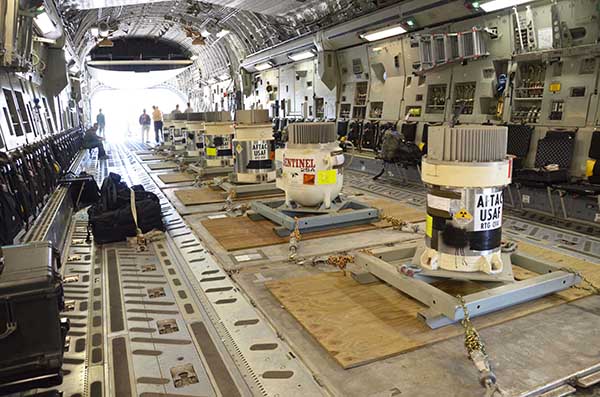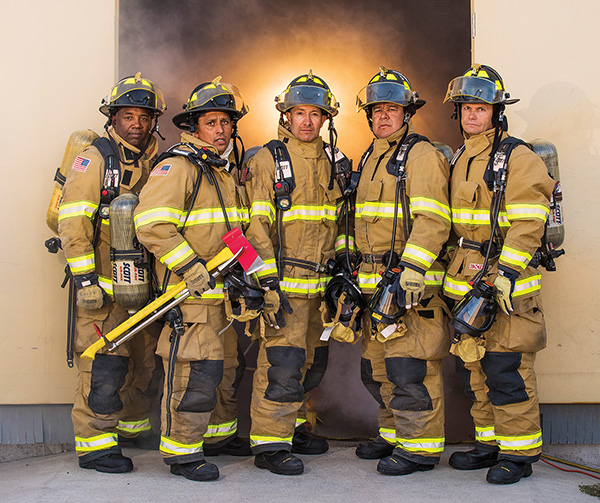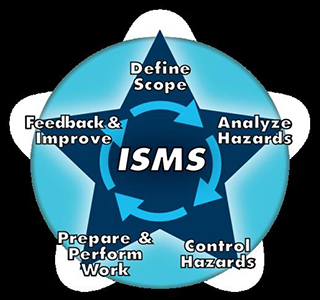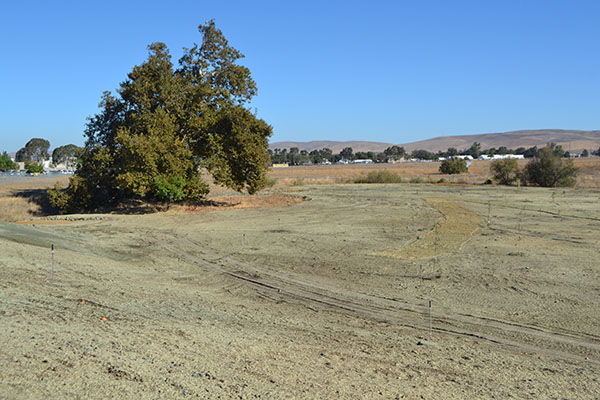Safely disposing of excess nuclear material

Sandia’s Waste Management team supported the US Air Force to transfer excess nuclear materials from the Alaskan Arctic Circle area to the Nevada National Security Site. The material originated from 10 radioisotope thermoelectric generators that were once used as a power source by the Air Force Technical Applications Center. While the partnership began in 2001, the July 2015 transfer represented several years of collaboration and planning to safely dispose of the hazardous material. (4100) IMS, LF
During the 2015 DOE Office of Enterprise Assessments (EA-22) audit of Sandia’s Security Program, the EA-22 team identified Sandia/New Mexico as effectively managing security operations. Additionally, the EA-22 team noted a number of best practices at Sandia that should be shared across the complex. This was the first audit of this type since 2007 and, with the many changes that have occurred at Sandia since then, it was an accomplishment to have an external audit team recognize Sandia’s demonstration of “excellent continued sustained improvements.” (4200) IMS, LF
Security Information Systems (9521), along with Classified Matter Protection and Control (4254-1), developed a new Classified Mail Channel (CMC) application. The previous application only had an administrative feature in which the CMC administrator inputted all data from a hard copy form submitted from the customer. The new application automated the hard copy form and incorporates engineered controls, which improves data integrity. The workflow is now automated and has reduced the processing time by 75 percent. (9500, 4200) NW, NW
Top prize at HAZMAT Challenge

A five-man Emergency Response Team from Sandia, including, left to right, John Ledet, Dale Larez, Victor Marquez, Richard Lovato, and Troy Hamby nabbed top technical honors at the recent 19th HAZMAT Challenge at Los Alamos National Laboratory. (Photo by Randy Montoya)
Sandia’s Emergency Response Team (ERT) successfully responded to the challenges presented during the Hazmat Challenge held at Los Alamos National Laboratory and was awarded First Place in the Technical Category. The ERT’s skills were tested along with those of 10 other teams from New Mexico, Missouri, and Nebraska through various environments such as clandestine laboratories, multiple modes of transportation, industrial piping scenarios, simulated radiological releases, and a confined space event. These challenges provided Sandia the opportunity to demonstrate proficiencies and, as a result, give members of the workforce confidence that these skills would transfer to real-world incidents at Sandia. (4200) IMS, LF
The Foreign National Information System (FNIS) is used by the Labs to create security plans for foreign national visitors and to document foreign interactions. Departments 9521 and 4225 teamed to design and develop a new FNIS application. A fundamental requirement for the application was usability and reliable performance. The new application was benchmarked against the existing production system and is 15 times faster than the old application, which equates to an efficiency of approximately 56 hours per year, per approver, presuming 100 FNRs a month. (9500, 4200) NW, NW

Center 4800 finished FY15 with the best safety record to date, with a total recordable case rate of 1.15 compared to the corporate rate of 1.31. This achievement in safety excellence is a reflection of cultural and behavioral practices of the entire center. Every day more than 300 maintenance workers, 300 construction personnel, 60 service contractors, and 175 additional professional employees perform activity-level work throughout the Sandia campus. Each individual is part of this success metric because safety and critical thinking are engrained in Facilities Management and Operations Center Work Planning and Controls. (4800) IMS, LF
The Arroyo Seco Improvement Program

The winter of 1997-1998 was the last strong El Niño event in California and many remember the significant flooding that occurred at the Sandia/California site. Since then, Sandia has been working in partnership with the US Army Corps of Engineers to repair that damage and prevent future flooding events via a 10-year Arroyo Seco Improvement Program (ASIP). The ASIP consists of 18 projects along the Arroyo Seco, the most recent of which, the development of a flood plain with trees and native shrubs, will help slow run-off and provide habitat for sensitive species. (8500) IMS, LF